On August 6, 1945, an American B-29 bomber named the Enola Gay, left the island of Tinian for Hiroshima, Japan. This mission was piloted by Col. Paul Tibbets. Hiroshima was chosen as the primary target since it had remained largely untouched by the bombing raids and the bomb's effects could be clearly measured.
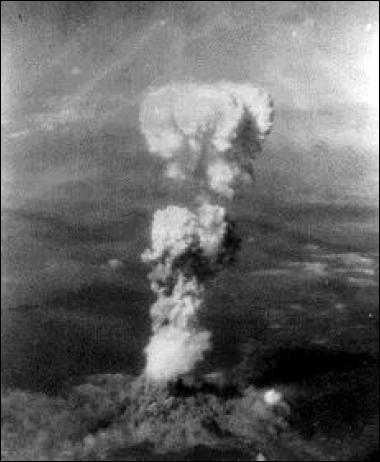
The U-235 gun-type bomb, named Little Boy, exploded at 8:16:02 a.m. In an instant 80,000 to 140,000 people were killed and 100,000 more were seriously injured.
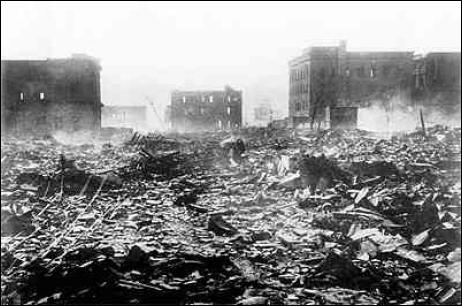
In essence, the Little Boy design consisted of a gun that fired one mass of uranium 235 at another mass of uranium 235, thus creating a supercritical mass. A crucial requirement was that the pieces be brought together in a time shorter than the time between spontaneous fissions. Once the two pieces of uranium are brought together, the initiator introduces a burst of neutrons and the chain reaction begins, continuing until the energy released becomes so great that the bomb simply blows itself apart. This image below is a replica of the bomb that was dropped over Hiroshima, Japan on August 6, 1945.
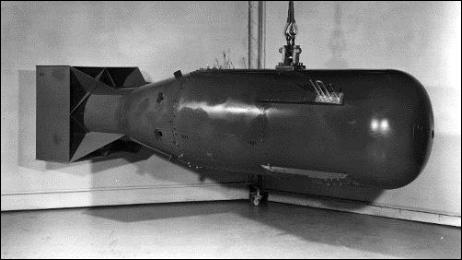
Little Boy Specifications Length: 10 feet 6 inches (3.2 meters) Diameter: 29 inches (74 cm) Weight: 9,700 lbs (4400kg) Yield: 12.5 kilotons
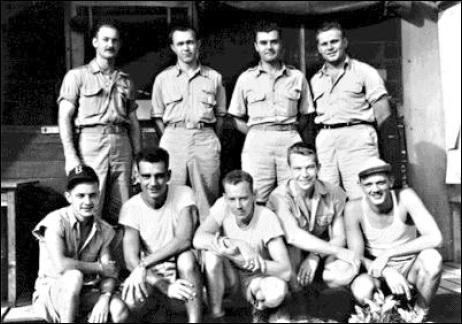
[back row (L-R) ] Major Ferebee, Captain Van Kirk, Colonel Tibbets, Captain Lewis, Staff Sergeant Caron, Sergeant Stiborik, Staff Sergeant Duzenbury, Private First Class Nelson, Sergeant Shumard
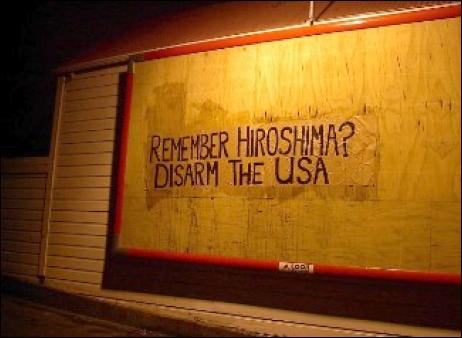
Protest Billboard in Wellington
Images Below: 'Food Not Bombs' stall at Victoria University, Wellington NZ, commemorating the anniversary of the bombing of Hiroshima.
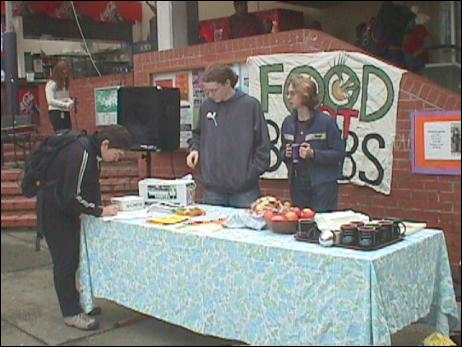



 Eugene Doyle: The Fall Of Saigon 1975 - Fifty Years Of Repeating What Was Forgotten
Eugene Doyle: The Fall Of Saigon 1975 - Fifty Years Of Repeating What Was Forgotten Peter Dunne: Dunne's Weekly - Trump's Tariffs Still Pose Risks For New Zealand
Peter Dunne: Dunne's Weekly - Trump's Tariffs Still Pose Risks For New Zealand Keith Rankin: Barbecued Hamburgers And Churchill's Bestie
Keith Rankin: Barbecued Hamburgers And Churchill's Bestie Gordon Campbell: On Why The US Stands To Lose The Tariff Wars
Gordon Campbell: On Why The US Stands To Lose The Tariff Wars Eugene Doyle: Before It’s Too Late - Reimagine New Zealand’s Military Future
Eugene Doyle: Before It’s Too Late - Reimagine New Zealand’s Military Future  Binoy Kampmark: Gender Stunts In Space - Blue Origin’s Female Celebrity Envoys
Binoy Kampmark: Gender Stunts In Space - Blue Origin’s Female Celebrity Envoys